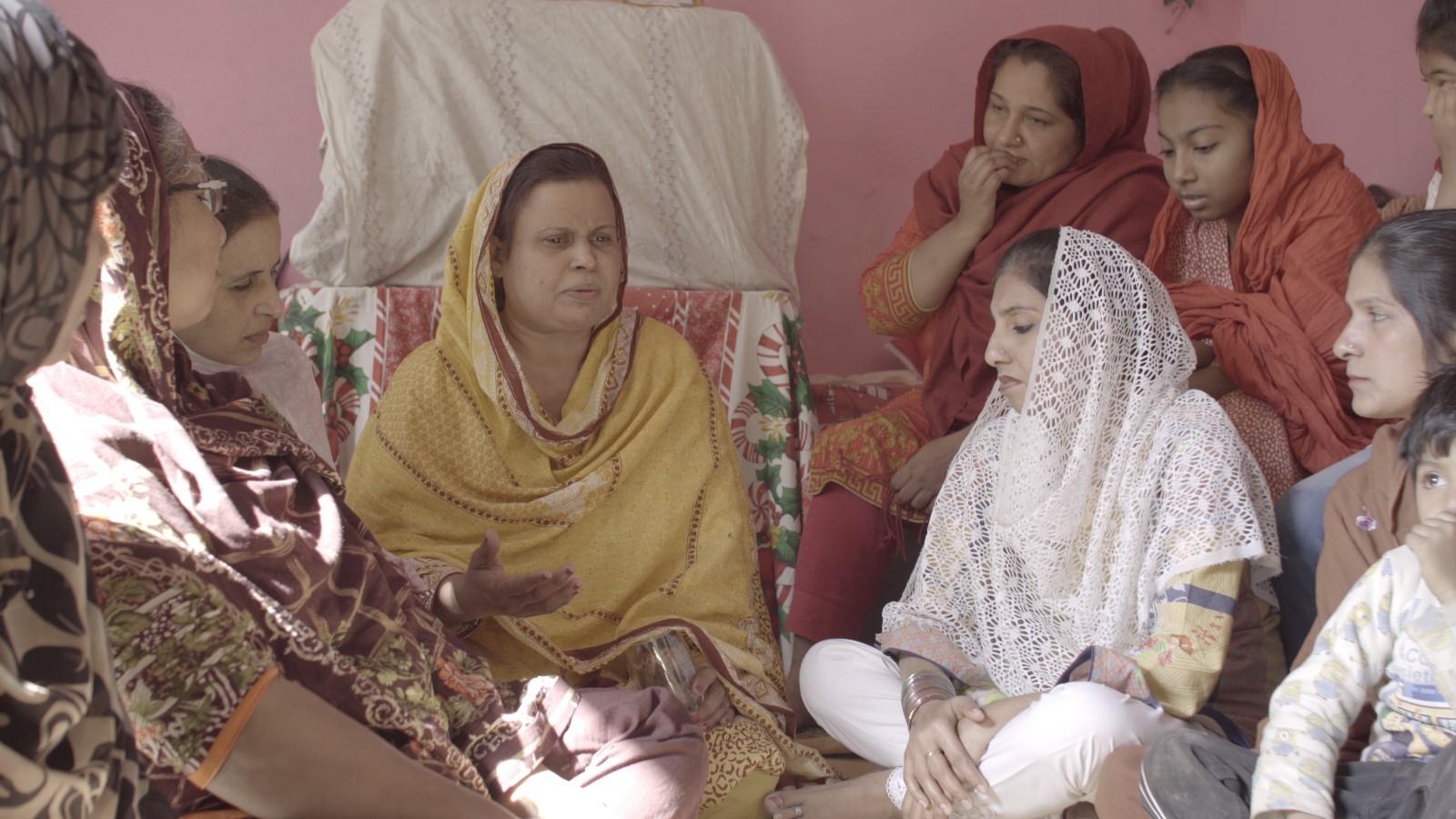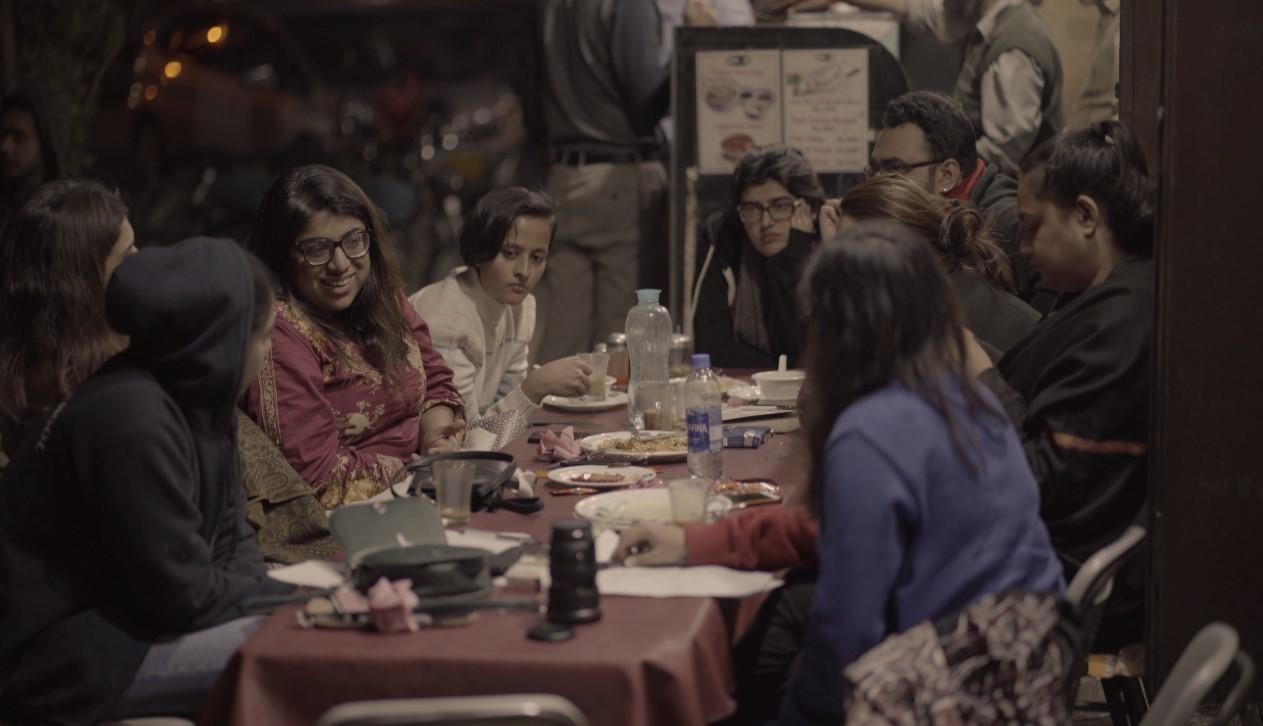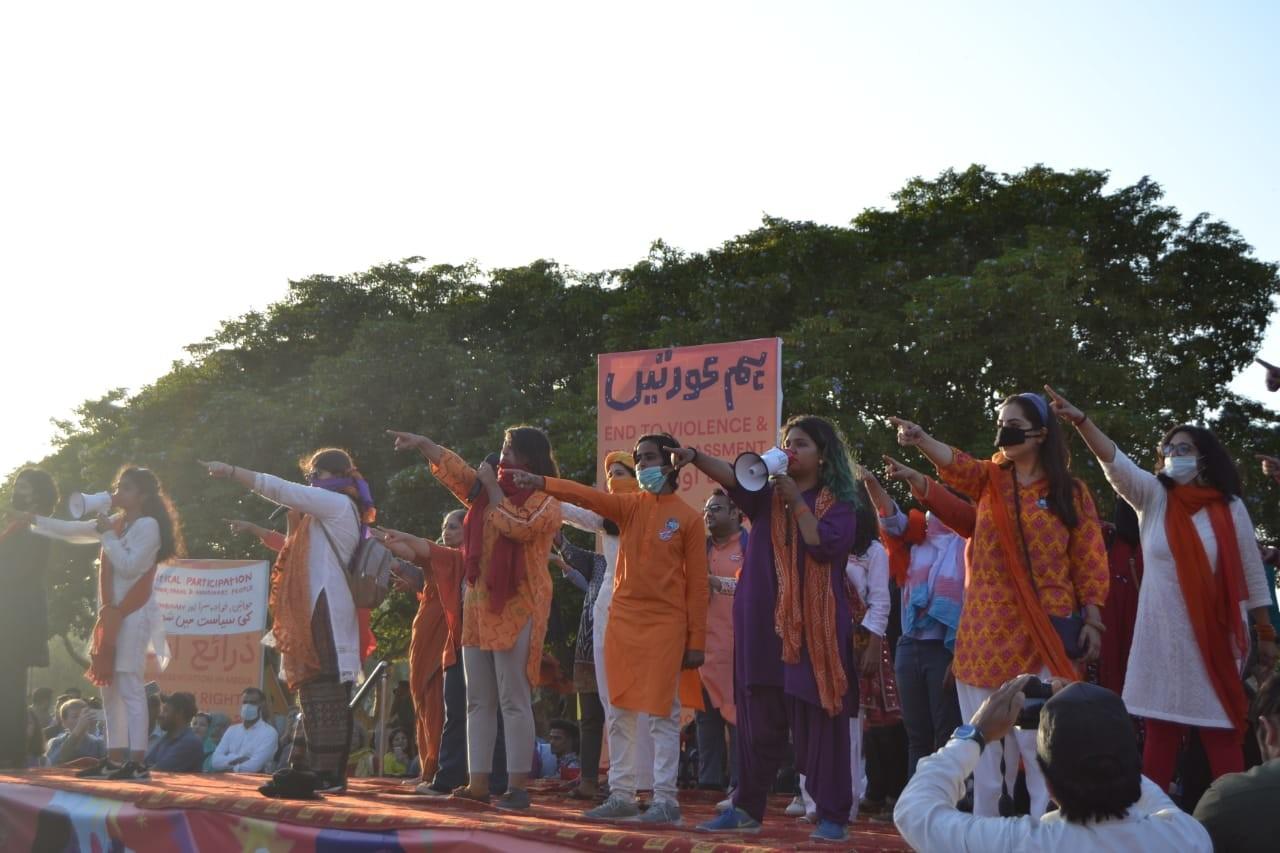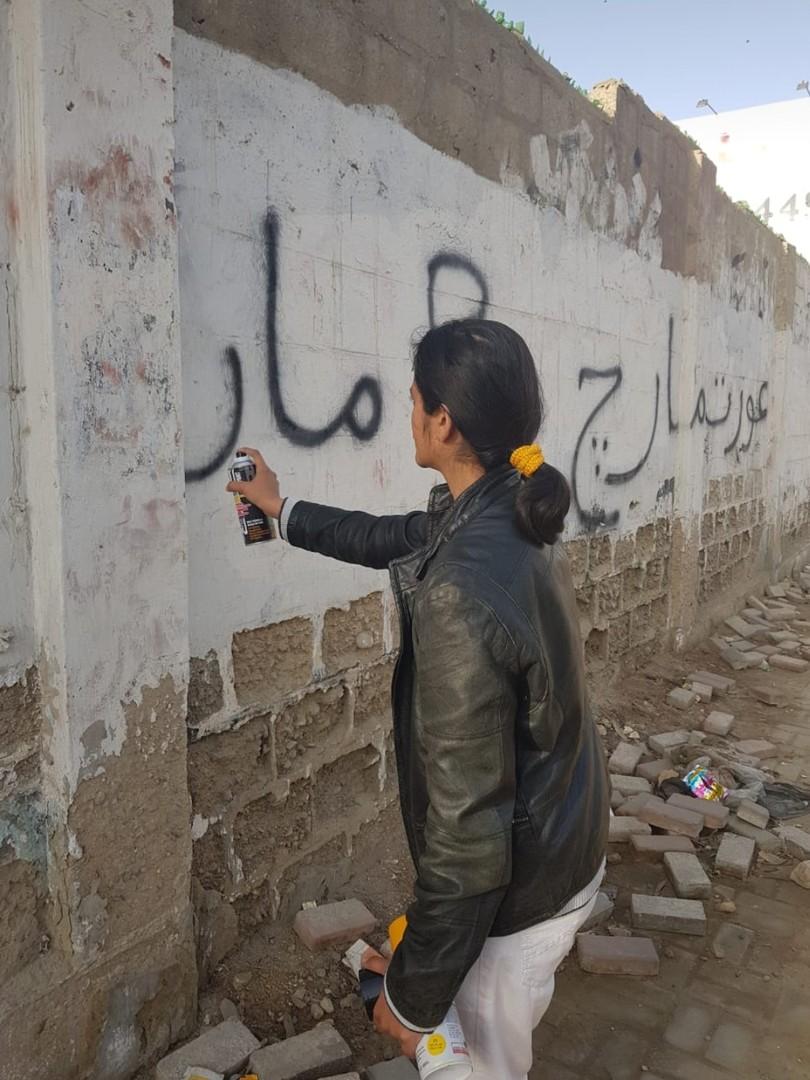A March for Rights, Life and Existence: This Stained Dawn by Anam Abbas
Chronicling the genesis of feminist struggles in Pakistan in the first three minutes of the documentary—starting from the rise of Independence against British imperialism in the early 1940s to the fall of the Benazir Bhutto government in the 1980s—This Stained Dawn (2021) by Anam Abbas begins with a riveting start. The film was recently screened at Parda Faash, a festival of South Asian films organised by Asia Society India Centre on 27 and 28 April 2024. Through a child’s voice-over in this opening sequence, comprised of a collage of animation, archival footage and photographs, Abbas lays the foundational fulcrum of the documentary’s guiding motivation—an attempt to document a movement that is fundamentally as old as time itself and journa how its battle cry has evolved with time through the act of organising a protest. Documenting the months leading up to, and the day of the Aurat March on 8 March 2020, a multi-city protest by women all over Pakistan, Abbas peels away the layers of complexity that steered a country-wide movement to lay bare the minute details and massive mobilisation that go behind the act of political organisation itself.
.png)
An animated still from the opening sequence of This Stained Dawn.
Unfolding through the eyes of the Aurat March organisers, ranging from senior feminist activists to new, young participants, the film mirrors the March’s core principle: to institute a non-hierarchical structure in its leadership. Like the march itself, the film devotes its time and attention to the diversity of the various organisers, participants, voices and perspectives that co-exist in a heterogeneous coming together of women from different sociocultural backgrounds.
1.png)
Young organisers preparing the piece to be performed at the Aurat March.
In a key moment in the film during community mobilisation, where young activists are going door-to-door to inform local women in Karachi about the upcoming march, differences of opinion within the feminist struggle crack through. The filmmaker does not shy away from upholding the fractures, defying the presumption of a smooth, politically correct and amicable uprising where every woman is on the same page about their rights, freedoms and demands. Gender cannot be understood as independent of class, and such moments in This Stained Dawn reinforce the intersectional complexity of the feminist movement.

Differences of opinion on what constitutes feminism for different women come out during a discussion between the Aurat March organisers and the local women in Karachi.
Capturing the simmering collective rage against the prejudices, discrimination and violence spanning across domestic and national spheres, Abbas skillfully juxtaposes the daily efforts and preparation of the organisers in a realistic portrayal of grassroots work against an array of panel discussions and political debates showcased on national news channels, where men freely spew hatred, misogyny and threats against women.

Organisers meeting in the days leading upto the march.
The treatment not only brings to light how women have to negotiate with violent patriarchal forces of power in every sphere of life but also shows the constant resistance and tenacity required to organise a radical uprising against the state’s prevailing surveillance and suppression.

Women organisers and protesters at the Aurat March of 2020.
A large part of the film takes place outdoors in public spaces. We see hundreds and thousands of women coming together to raise their voices as one, to claim the rights that they are entitled to, as both citizens and women. In a discussion at a college screening earlier this year, Abbas had mentioned that one of the earliest seeds of the 2018 Aurat March was embedded in another multi-city feminist initiative called Girls at Dhabas. This movement was partly inspired by the work of Sameera Khan, Shilpa Phadke and Shilpa Ranade as outlined in their book Why Loiter (2011), which studied the limitations of mobility for women, and the occupation of public spaces as a feminist act. This Stained Dawn reiterates this act of occupying space as a form of resistance in every alternate frame, bridging the lines between the domestic and the public, and how the latter becomes an instrumental tool and medium of revolution.

Using public spaces and graffiti as a medium to document resistance.
The film ends with a powerful performance piece held across the eleven cities in Pakistan where the Aurat March took place simultaneously, with women stomping their feet and clapping their hands as they shout for their rights. Abbas strategically ties up the months of labour that led up to the day with the multigenerational pain and oppression that gave birth to the feminist movement in the first place—in the hopes of igniting a revolutionary change in attitude, ideology and policies on women’s rights in the country.
.png)
Women across eleven cities in Pakistan perform a powerful piece during the Aurat March to demonstrate their rights and demands.
To learn more about some of the films screened at Parda Faash and other festivals, read Sujaan Mukherjee’s essay on Taangh (2021) by Bani Singh and Shranup Tandukar’s essay on Before You Were My Mother (2022) by Prasuna Dongol. Also, read Sukanya Deb’s two-part discussion on Showgirls of Pakistan (2021) by Saad Khan, Arushi Vats’ review of Zoya Siddiqui’s A distant Place (2021), and Samira Bose on the artist Zubeida Agha’s personal archive.
All images are stills from This Stained Dawn (2021) by Anam Abbas, courtesy of the filmmaker and Asia Society India Centre.




